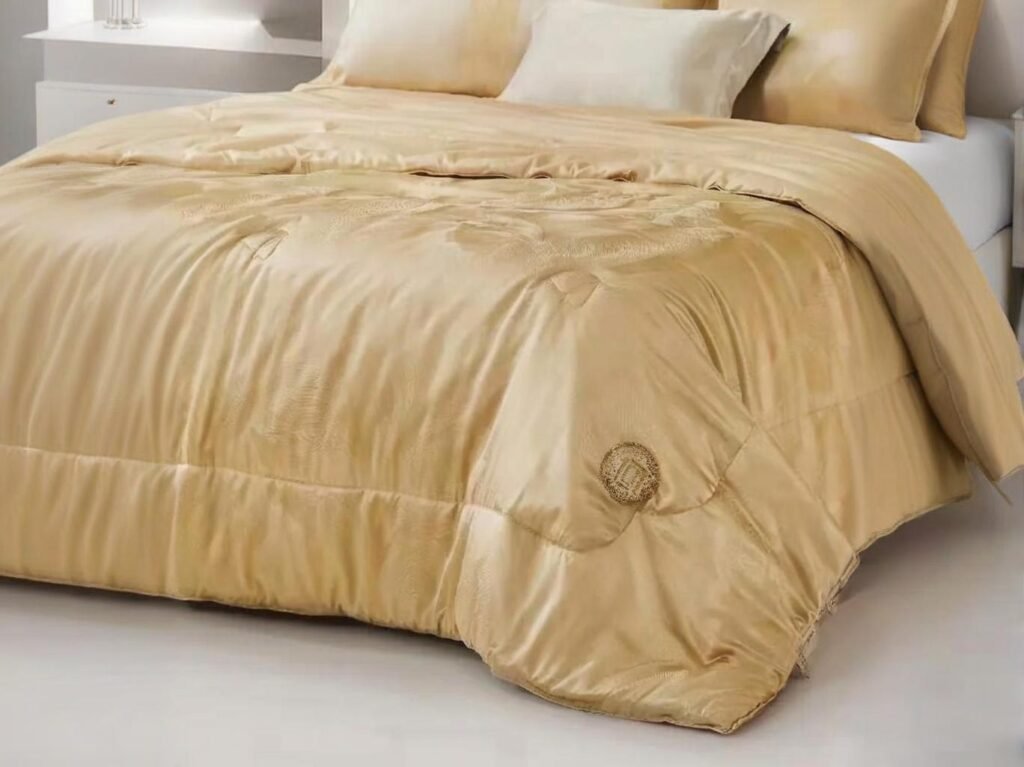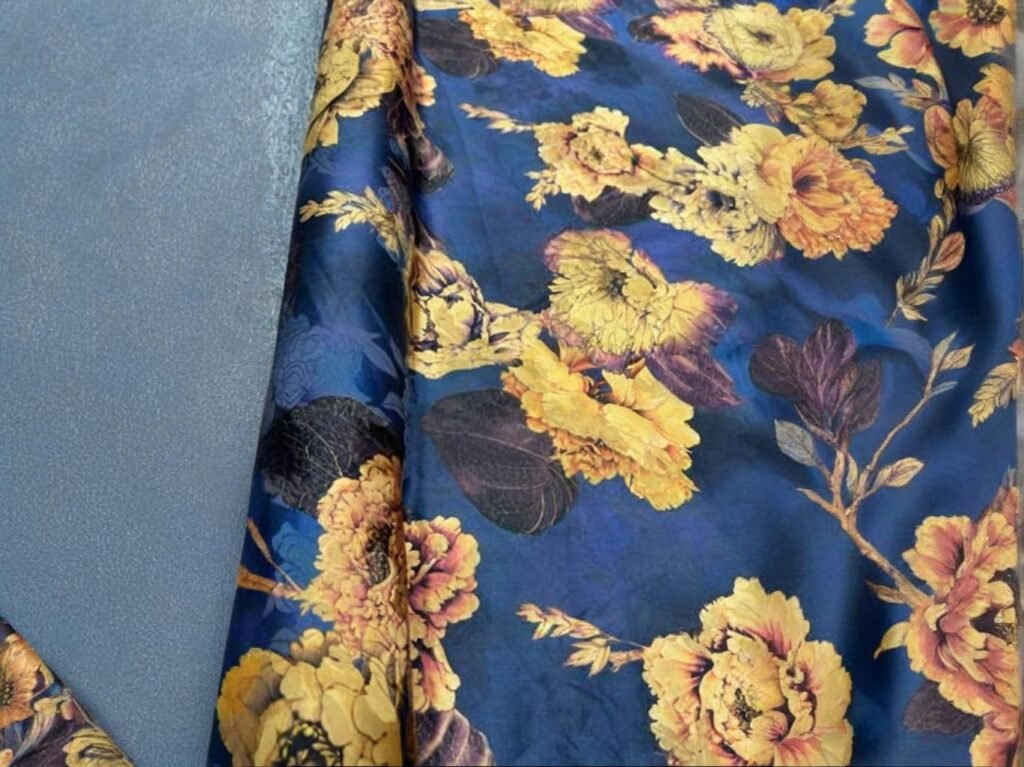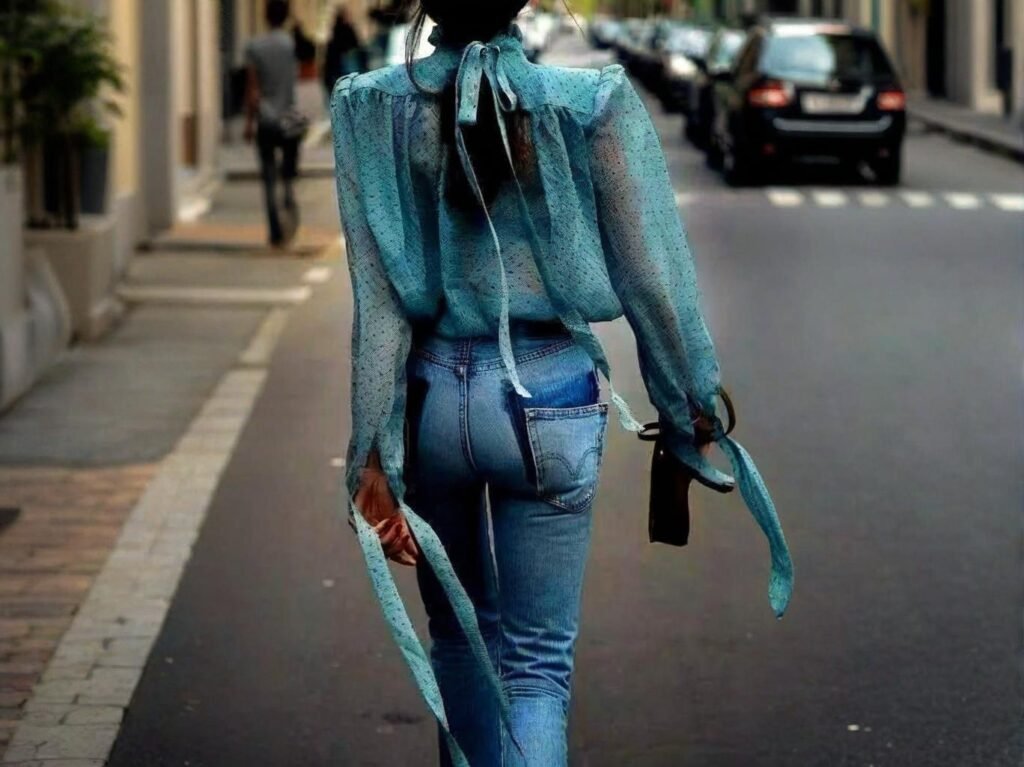Silk, known for its luxurious sheen and soft texture, has been a coveted fabric for centuries. However, with increasing demand comes the risk of counterfeit or low-quality silk fabrics flooding the market. To help buyers distinguish authentic, high-quality silk from inferior products, certifications and standards play a pivotal role. These certifications ensure that silk fabrics meet rigorous quality, environmental, and ethical standards—giving consumers confidence in their purchases. Silk fabric quality is ensured through certifications like GOTS, OEKO-TEX, and Fair Trade. These standards help guarantee authenticity, ethical sourcing, and environmental responsibility.
Think about a high-end fashion designer, sourcing silk for a premium collection. The stakes are high: quality and consistency are crucial to the brand’s reputation. This designer turns to certified silk suppliers to guarantee that the fabric not only meets aesthetic standards but also aligns with sustainability and ethical sourcing practices. Certifications make the difference between a successful partnership and costly mistakes.
Let’s dive into the critical certifications and standards that help ensure the authenticity and quality of silk fabrics, safeguarding both the environment and consumers.
What Are the Key Standards for Silk Fabric Quality?

The quality of silk fabric is governed by several key standards that focus on fiber integrity, color retention, durability, and ethical production processes. These standards help manufacturers, designers, and consumers alike to ensure that the silk they purchase is of the highest possible quality. Key standards for silk fabric quality focus on fiber integrity, durability, colorfastness, and ethical production, ensuring the fabric meets luxury and sustainability benchmarks.
Among the most notable standards are OEKO-TEX, GOTS, and ISO 9001, each serving a different yet complementary function in maintaining silk fabric quality.
Detailed Overview of Key Quality Standards
1. OEKO-TEX Standard 100
- Focuses on ensuring that silk fabrics are free from harmful substances that could be harmful to skin or health
- Certifies that all textile products are tested for toxins and hazardous chemicals before reaching the market
- Provides peace of mind for consumers with sensitive skin or those seeking eco-friendly products
2. GOTS (Global Organic Textile Standard)
- GOTS certification guarantees that the fabric is made from certified organic fibers, including silk
- It ensures environmentally responsible manufacturing processes, including low-impact dyeing and fair labor practices
- GOTS covers every stage of production, from fiber sourcing to finished product, ensuring the sustainability and ethical integrity of the silk
3. ISO 9001
- Focuses on quality management systems across manufacturing processes
- Ensures consistency in the production of high-quality silk fabrics, minimizing errors and defects in production runs
- Widely recognized in industries globally as a benchmark for operational excellence
Silk Quality Standard Comparison
| Standard | Focus Area | Key Benefits |
|---|---|---|
| OEKO-TEX Standard 100 | Chemical safety, skin safety | Ensures health safety and eco-friendliness |
| GOTS (Global Organic) | Organic fiber, eco-friendly production | Verifies organic sourcing and sustainability |
| ISO 9001 | Manufacturing quality, consistency | Guarantees high production standards |
Real-World Application
A luxury brand recently adopted GOTS-certified silk for a new eco-conscious line. The GOTS certification not only confirmed that their silk was organic, but it also ensured sustainable practices were employed throughout the supply chain, making it a marketable feature for environmentally-aware consumers.
How Do Silk Certifications Help Guarantee Fabric Authenticity?
Certifications like OEKO-TEX, GOTS, and Fair Trade provide verified, transparent indicators that help consumers and businesses confirm the authenticity and quality of silk fabrics. These certifications indicate that the fabric meets internationally recognized standards, providing protection against counterfeit fabrics or misrepresentations of quality. Silk certifications ensure authenticity by verifying that fabrics are made with high-quality fibers, ethical practices, and sustainable methods. They protect consumers and businesses from fraud.
By requiring certifications, buyers ensure that the silk they purchase has been produced responsibly, with verified standards met at each stage of production. Without these certifications, there’s always the risk of acquiring subpar silk that might not live up to the high standards expected.
The Role of Certifications in Silk Fabric Authenticity
1. Verifying Fiber Content
- Certifications like OEKO-TEX and GOTS ensure that the fiber content is accurately represented and that it adheres to strict guidelines for silk authenticity
- These certifications confirm that the silk is not blended with synthetic fibers or mislabeled, safeguarding buyers from fraud
2. Ethical Production Verification
- Certifications like Fair Trade and BSCI (Business Social Compliance Initiative) ensure that workers involved in the silk production process are paid fairly, work in safe conditions, and have their labor rights respected
- Fair Trade silk guarantees that the fabric has been produced under ethical conditions, adding value to the product beyond its physical qualities
3. Environmental Protection
- Certifications like GOTS and OEKO-TEX also ensure that silk production processes follow sustainable practices, including reduced water usage and non-toxic dyes
- GOTS certification ensures that the fabric is free from harmful chemicals, making it safer for both the environment and consumers
4. Consumer Trust
- Buyers increasingly demand transparency in sourcing, and certifications provide that transparency
- These seals of approval serve as proof of a fabric’s authenticity, supporting brands in their marketing and consumer trust-building efforts
Certification Verification Process
- Brands must request documentation and audit reports from suppliers to verify certifications
- Third-party verification ensures that the product aligns with the standards promised by certifications
| Certification | Key Verification Area | Buyer Action |
|---|---|---|
| OEKO-TEX Standard 100 | Chemical safety, skin safety | Request lab test results |
| GOTS (Global Organic) | Organic certification, sustainable production | Ensure organic fiber sourcing |
| Fair Trade | Fair labor practices, ethical production | Verify supplier’s Fair Trade certification |
| ISO 9001 | Quality control | Confirm manufacturing consistency |
A fashion brand committed to sustainable practices only sources OEKO-TEX certified silk for their garments. This certification guarantees that the fabric is free from harmful chemicals and aligns with their eco-conscious brand values.
Which Global Certifications Are Recognized for Silk Fabric?

There are several global certifications that provide credibility and transparency for silk fabrics, confirming their authenticity, quality, and ethical sourcing. Among the most widely recognized are OEKO-TEX, GOTS, Fair Trade, and Silk Mark, each serving a distinct purpose in verifying the silk’s provenance and production process. Global certifications like OEKO-TEX, GOTS, and Fair Trade provide transparency, ensuring the silk fabric is authentic, sustainable, and ethically sourced from farm to finished product.
These certifications offer peace of mind to both manufacturers and consumers, guaranteeing that the fabric adheres to strict industry standards for health safety, sustainability, and ethical production.
Overview of Global Certifications
1. OEKO-TEX Standard 100
- Ensures that silk fabrics are free from harmful chemicals, making them safe for human skin
- Focuses on health safety and environmental impact during fabric production
- A widely accepted standard used by many global brands to ensure consumer safety and trust
2. GOTS (Global Organic Textile Standard)
- Guarantees that silk is made from organic fibers, such as organic mulberry silk
- Includes eco-friendly production practices such as water conservation, energy use reduction, and waste management
- Ensures fair labor conditions throughout the supply chain, benefiting workers and communities
3. Fair Trade Certification
- Focuses on ethical production by ensuring that workers are treated fairly, paid a fair wage, and work in safe conditions
- Promotes social and environmental sustainability, especially for small-scale producers in developing countries
4. Silk Mark (India)
- A certification developed by the Central Silk Board of India to guarantee genuine silk
- Silk Mark verifies that the fabric is made from natural silk and not blended with synthetic fibers
- It provides traceability, ensuring the fabric’s authenticity and origin
| Certification | Focus Area | Key Benefits |
|---|---|---|
| OEKO-TEX Standard 100 | Chemical safety, human health | Ensures fabric safety, free from toxins |
| GOTS (Global Organic) | Organic certification, sustainable production | Guarantees organic sourcing and eco-friendly practices |
| Fair Trade | Ethical labor, fair wages | Ensures ethical production and fair wages for workers |
| Silk Mark | Authenticity, silk quality | Guarantees genuine silk content, traceability |
A high-end designer brand only sources OEKO-TEX certified silk satin for their collections. This certification provides customers with confidence that the fabric is free of harmful chemicals, aligning with the brand’s commitment to sustainable luxury.
What Is the Importance of GOTS Certification in Silk Fabric Production?
The Global Organic Textile Standard (GOTS) is one of the most important certifications for silk fabric. GOTS certifies not only the organic content of the silk but also the environmentally friendly processes and fair labor practices involved in its production. With the rise of eco-conscious consumers, GOTS has become a key certification for luxury brands and manufacturers looking to differentiate their silk fabric on the market. The GOTS certification ensures that silk fabrics are made from organic fibers and processed using eco-friendly methods. It also ensures that workers are paid fair wages, making it crucial for ethical sourcing.
For buyers, sourcing GOTS-certified silk means committing to environmentally responsible and socially sustainable practices. This certification adds significant value to the product, particularly in markets where consumers are increasingly demanding transparency.
The GOTS Certification Process for Silk
1. Organic Silk Fiber
- GOTS certification ensures that the silk fibers used are sourced from organic mulberry trees that have not been treated with pesticides or synthetic fertilizers
- Organic silk farming also promotes biodiversity and soil health, contributing to long-term environmental sustainability
2. Sustainable Production Processes
- Silk production under GOTS standards includes processes that minimize environmental harm, such as waterless dyeing, energy-efficient manufacturing, and the reduction of chemical waste
- It also emphasizes the use of biodegradable chemicals and natural dyes, which are better for both human health and the planet
3. Ethical Labor Practices
- GOTS ensures that workers in silk farms and production facilities are treated fairly, with safe working conditions and fair wages
- The certification supports labor rights, particularly in developing countries where labor exploitation has been an issue in textile production
4. Transparency and Traceability
- With GOTS certification, the entire production chain is traceable—from the silk farming to fabric production, ensuring full transparency
- Buyers can be confident that the product has been ethically produced and is free from harmful substances
Why GOTS Matters for Luxury Brands Luxury brands use GOTS-certified silk to appeal to the growing market of eco-conscious consumers. This certification not only boosts the brand’s reputation but also ensures that the fabric aligns with sustainable fashion trends.
A leading eco-luxury fashion brand was able to increase its sales by 30% by incorporating GOTS-certified silk into their collections. This move not only aligned with their brand values but also attracted environmentally conscious consumers who prioritized sustainable sourcing.
How Does OEKO-TEX Standard 100 Apply to Silk Fabric?

OEKO-TEX Standard 100 is a globally recognized certification that ensures textiles are free from harmful chemicals and safe for human health. This certification is crucial for silk fabric production, as it guarantees that no toxic substances are present in the fabric that could cause harm when in contact with skin. For luxury brands and eco-conscious consumers, OEKO-TEX certified silk represents both health safety and environmental responsibility. OEKO-TEX Standard 100 guarantees that silk fabrics are tested for harmful chemicals, ensuring they are safe for skin contact and meet high environmental standards.
This certification provides confidence to consumers and businesses, knowing that the silk fabric used in their products has been tested for over 100 harmful substances, making it suitable for even the most sensitive skin types.
How OEKO-TEX Ensures Fabric Safety
1. Comprehensive Chemical Testing
- OEKO-TEX Standard 100 evaluates fabrics for over 100 harmful substances, including pesticides, phthalates, and heavy metals
- These tests help ensure that silk fabrics are free from chemicals that could irritate the skin or cause health issues
2. Skin Compatibility
- The certification process also checks for skin irritants and ensures that fabrics are hypoallergenic
- OEKO-TEX certified fabrics meet stringent health and safety regulations, making them ideal for baby clothing, medical textiles, and intimate apparel
3. Certification Levels
- OEKO-TEX Standard 100 provides certification in four levels based on the level of exposure to harmful substances
- Class I (most stringent) is typically for baby products, while Class IV is for textiles with limited human contact (e.g., upholstery)
4. Environmental Responsibility
- While OEKO-TEX focuses on human health, it also encourages sustainable practices in textile production
- Fabrics certified under OEKO-TEX Standard 100 often align with other certifications like GOTS or Fair Trade to ensure sustainable sourcing and eco-friendly production processes
OEKO-TEX Impact Table
| Certification Level | Intended Use | Testing Focus |
|---|---|---|
| Class I (Most Stringent) | Baby products, medical textiles | Free from harmful chemicals |
| Class II | Products in direct skin contact | Hypoallergenic, safe for skin |
| Class III | Products with limited skin contact | Suitable for upholstery |
| Class IV | Industrial textiles | Focuses on safety for workers |
A luxury lingerie brand chose OEKO-TEX certified silk satin for their new eco-conscious line, enhancing the brand’s reputation for safe, sustainable products. By ensuring that the fabric is safe for intimate wear, they tapped into a growing market segment focused on health-conscious and eco-aware consumers.
What Role Does Fair Trade Certification Play in Silk Fabric Sourcing?
Fair Trade certification ensures that the silk production process supports ethical labor practices and provides fair wages for workers, particularly in developing countries. For buyers and brands seeking to promote social responsibility, Fair Trade certification serves as a valuable assurance that silk is produced under ethical working conditions with respect for human rights. Fair Trade certification guarantees that silk is sourced from farms where workers are paid fair wages, work in safe conditions, and are involved in the production process under ethical practices.
Fair Trade certification also empowers local communities by supporting sustainable practices, promoting better working conditions, and reducing poverty in rural areas where silk is often produced.
Fair Trade Certification and Its Benefits
1. Fair Labor Practices
- Fair Trade ensures that workers involved in silk farming and processing receive fair wages and have safe working conditions
- Workers are not exposed to exploitative practices or unsafe environments, ensuring better social equity
2. Support for Rural Communities
- Fair Trade promotes sustainable livelihoods by ensuring that silk producers in developing countries can access better market prices for their products
- Community development projects funded through Fair Trade premiums often include healthcare, education, and infrastructure improvements
3. Environmental Protection
- In addition to fair wages and working conditions, Fair Trade also promotes eco-friendly farming practices
- Fair Trade-certified silk farms are often required to use sustainable farming methods, such as crop rotation and minimal chemical use, to preserve the environment
4. Consumer Confidence
- For consumers, Fair Trade certification offers transparency, ensuring that the products they buy have been ethically sourced
- Brands using Fair Trade-certified silk can appeal to socially-conscious consumers who prioritize sustainability and ethical sourcing in their purchasing decisions
Fair Trade Impact Table
| Benefit | Fair Trade Certification for Silk | Non-Fair Trade Silk |
|---|---|---|
| Worker Welfare | Fair wages, safe working conditions | Often lower wages, unsafe conditions |
| Environmental Practices | Eco-friendly farming, minimal chemicals | Conventional farming, chemical-heavy |
| Social Impact | Community development, education | Limited or no social programs |
Real-World Application
A premium fashion brand partnered with a Fair Trade-certified silk producer, allowing them to proudly display the Fair Trade logo on their garments. This partnership not only enhanced the brand’s image but also helped support local silk farmers in Asia by providing better wages and health benefits.
How Are Sustainability and Eco-Friendly Certifications Impacting Silk Production?

Sustainability and eco-friendly certifications are playing an increasingly important role in the silk industry as both consumers and manufacturers prioritize environmental responsibility. With concerns over water usage, chemical waste, and labor practices, certifications like GOTS, OEKO-TEX, and Fair Trade are essential for promoting sustainable silk production. These standards help ensure that the silk produced is both environmentally friendly and ethically sourced, helping businesses align with global sustainability goals. Sustainability certifications in silk production, such as GOTS, OEKO-TEX, and Fair Trade, promote environmentally friendly practices, reduce waste, and ensure ethical labor conditions.
These certifications are crucial not only for meeting consumer demand for eco-conscious products but also for complying with growing global regulations focused on sustainability and social responsibility.
The Importance of Sustainability Certifications in Silk Production
1. Reducing Environmental Impact
- Waterless dyeing technologies and energy-efficient silk production practices are becoming standard with eco-friendly certifications like GOTS
- Sustainable silk farming methods, such as organic farming, help reduce the environmental footprint by limiting pesticide use and promoting biodiversity
2. Chemical Safety and Reduced Toxicity
- OEKO-TEX Standard 100 ensures that silk fabrics are free from harmful chemicals and substances, reducing the environmental pollution that comes from traditional dyeing and finishing processes
- Many sustainability-focused silk farms also reduce chemical use during the farming and production stages, ensuring that the end product is safer for both the environment and consumers
3. Ethical Labor and Social Responsibility
- Fair Trade certification emphasizes fair wages, safe working conditions, and community support, helping to create a socially responsible supply chain
- These certifications are essential in protecting the rights of workers in the silk industry, particularly in developing regions where labor exploitation can be an issue
4. Eco-conscious Consumer Trends
- Consumers are increasingly prioritizing brands that showcase sustainable practices and ethical sourcing
- Certifications like GOTS and Fair Trade not only enhance product appeal but also build brand loyalty among eco-conscious buyers
| Sustainability Benefit | GOTS Certified Silk | Non-Certified Silk |
|---|---|---|
| Environmental Impact | Eco-friendly farming, waterless dyeing | Conventional, chemical-intensive processes |
| Chemical Safety | No harmful chemicals or pesticides | Often contains harmful chemicals |
| Labor Rights | Fair wages, safe working conditions | Potential exploitation or unsafe conditions |
| Consumer Trust | Transparent, ethical sourcing | Unverified labor and sourcing |
A luxury brand working with Fair Trade certified silk showcased their commitment to eco-friendly practices by marketing their garments with the Fair Trade logo. This effort not only aligned with consumer values but also led to a 20% increase in sales from environmentally conscious customers.
What Should Buyers Look for When Verifying Silk Fabric Quality and Certifications?
When sourcing silk fabrics, it’s essential for buyers to ensure that the fabric meets both quality and ethical standards. Verification of silk certifications and quality control procedures can help avoid purchasing counterfeit or substandard silk. Buyers should assess certification documentation, fabric samples, and supplier transparency to ensure they are sourcing high-quality, ethically produced silk. Buyers should verify silk certifications, inspect quality control reports, and ensure supplier transparency to guarantee the authenticity, sustainability, and high quality of the fabric.
By carefully evaluating these aspects, buyers can make informed decisions that align with both luxury standards and ethical production values.
How to Ensure Quality and Certification of Silk Fabrics
1. Certification Verification
- Always ask for certification documents such as OEKO-TEX Standard 100, GOTS, and Fair Trade to verify that the silk has passed rigorous tests and meets quality standards
- Use third-party lab reports and audit results to ensure the fabric’s authenticity and environmental and social compliance
2. Sampling and Testing
- Request fabric samples to evaluate the quality, texture, and appearance of the silk before placing bulk orders
- Conduct burn tests, water absorption tests, and other practical evaluations to confirm the authenticity of the silk
3. Supplier Transparency
- Choose suppliers that are open about their production processes, material sourcing, and manufacturing standards
- Suppliers should provide traceability information for every stage of production, ensuring the silk is ethically sourced and manufactured
4. Inspecting for Fabric Consistency
- Verify that the silk fabric maintains uniformity in weave, color quality, and finishing treatments throughout the batch
- Consistent quality across every piece ensures that the fabric meets the luxury standards expected in the fashion industry
5. Customer Support and After-Sales Service
- A reputable supplier will offer customer support and after-sales service, ensuring that any issues with fabric quality can be addressed swiftly and effectively
| Quality Assurance Step | Action | Expected Outcome |
|---|---|---|
| Certification Verification | Check for GOTS, OEKO-TEX, Fair Trade | Verified eco-friendly and ethical fabric |
| Fabric Testing | Request samples and perform tests | Confirm fabric authenticity |
| Supplier Transparency | Inspect production and sourcing reports | Ensure ethical sourcing and production |
| Consistency Inspection | Evaluate texture, color, and finish | Uniform quality across all batches |
Real-Life Example
A leading fashion retailer sources GOTS-certified silk for their premium line of luxury sleepwear. By verifying lab reports, conducting burn tests, and working with transparent suppliers, they have maintained consistent fabric quality and customer satisfaction.
Ensuring the quality and authenticity of silk fabric is vital in today’s fashion and textile industries. By understanding and utilizing key certifications like GOTS, OEKO-TEX, and Fair Trade, buyers can confidently source high-quality, sustainable, and ethically produced silk fabrics. These certifications not only enhance consumer trust but also contribute to a more transparent and sustainable textile industry.
At SzoneierFabrics, we offer a wide range of certified silk fabrics, ensuring that each product meets the highest standards of quality, sustainability, and ethical production. Contact us today to explore our customized silk fabric options, receive free samples, and start sourcing with confidence.

